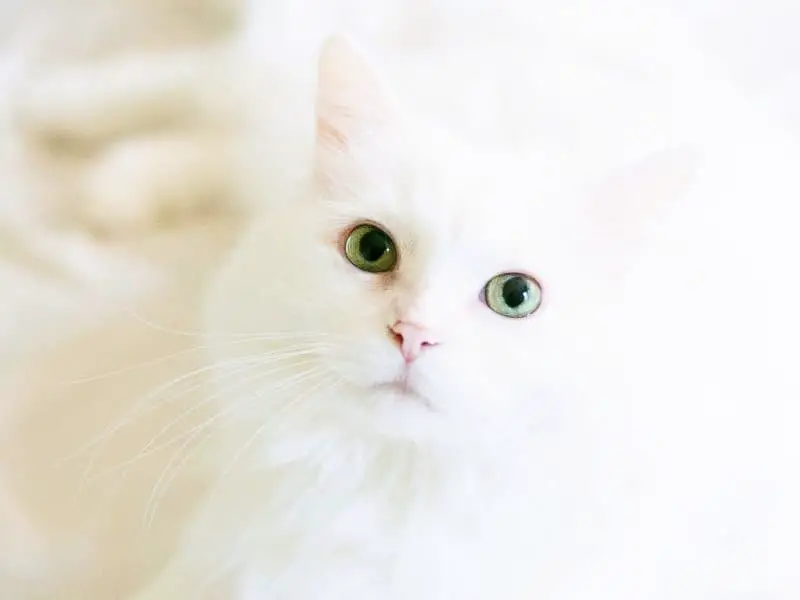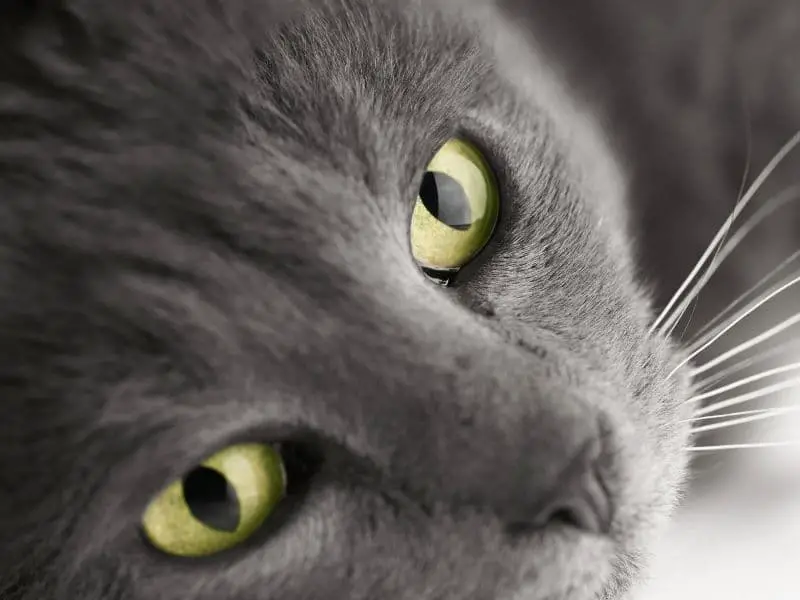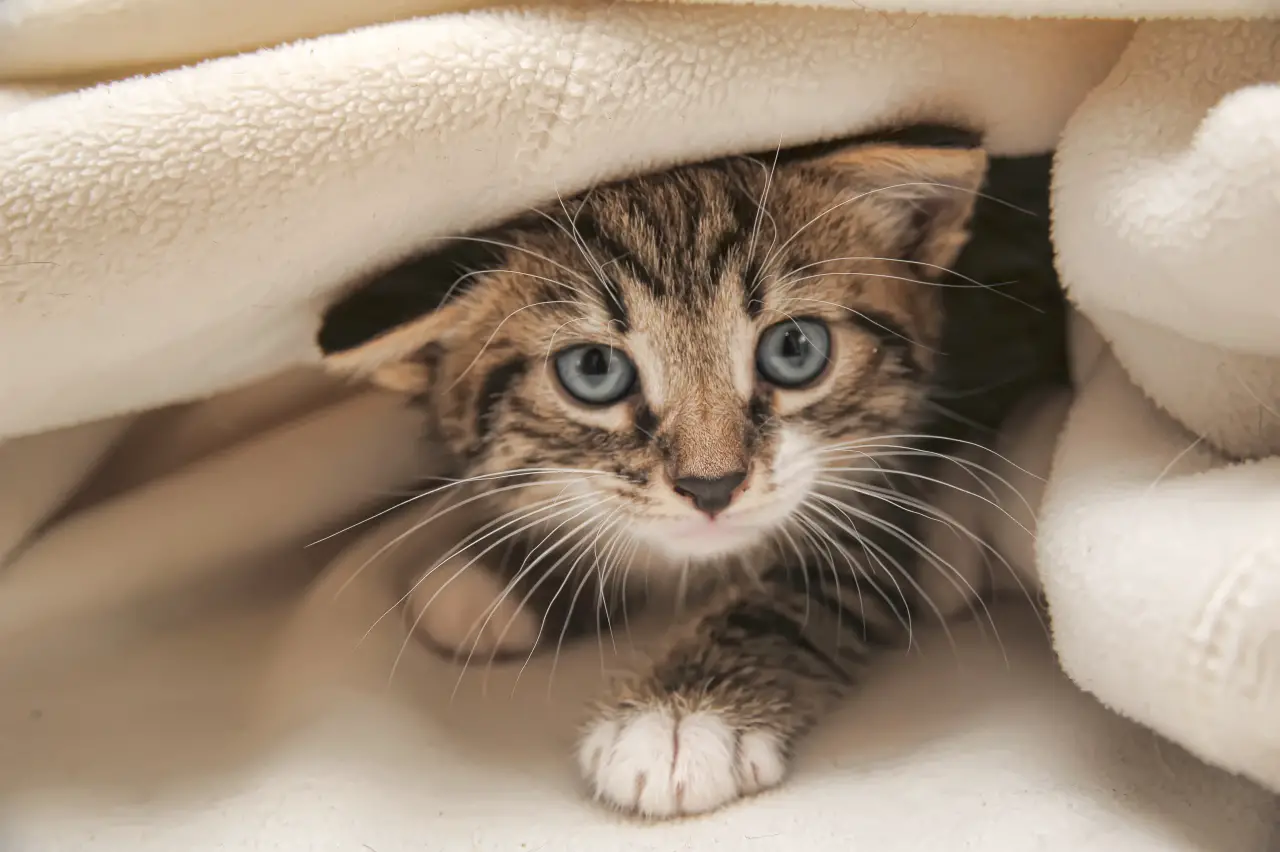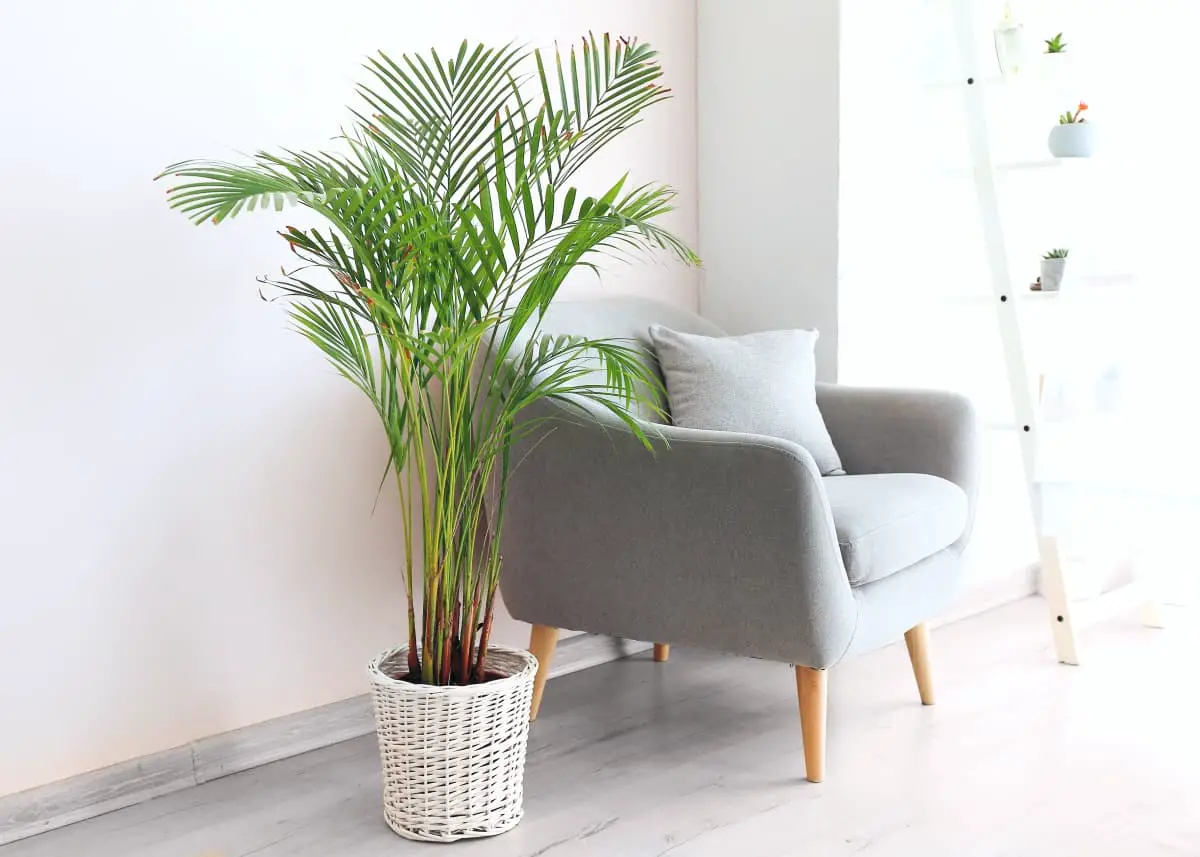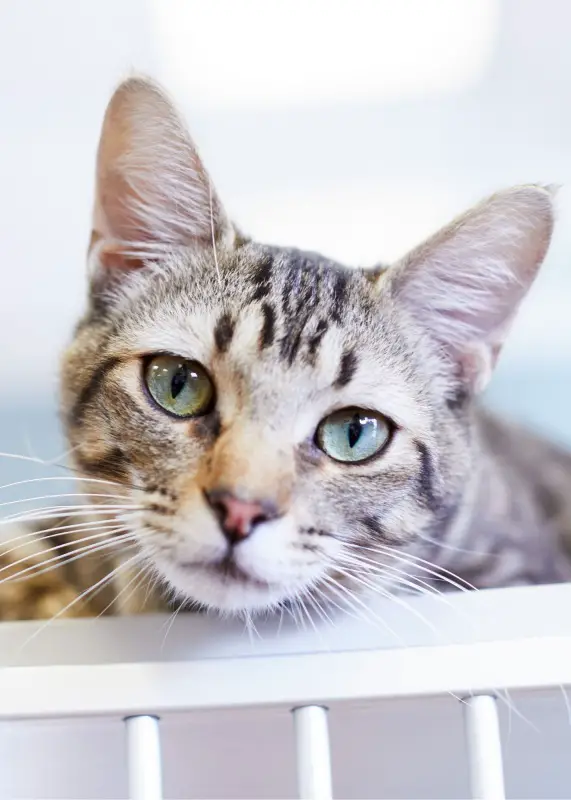Alternatives to Declawing Your Cat
This post may contain affiliate or referral links which means we may earn a sales commission. Please see our full affiliate disclosure here.
There are multiple reasons why you should look for alternatives to declawing your cat. Declawing a cat is not only painful and could cause behavioral and safety issues, it is an expensive and invasive surgery that isn’t without some medical risks.
Many people think that cats claw because of behavior problems like stress or boredom, but it is actually instinctive for them. A cat’s claws are more than just weapons; they’re tools used for climbing, running, and playing. They are also used for self-defense.
If you have a cat who is clawing up your furniture, there are things you can do. In this article, we will discuss products you can buy to stop scratching as well as behavioral and training ideas.
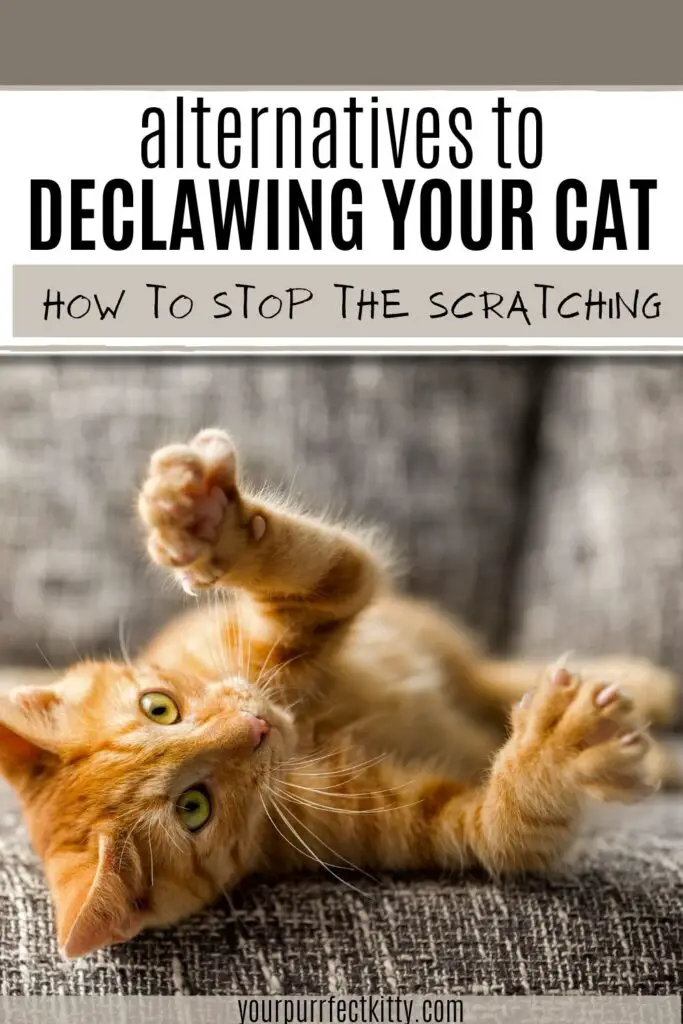
How do I keep my cat from scratching my furniture without declawing it?
There are many options other than declawing a cat. One of the easiest things you can do is to keep their claws trimmed with regular trimmings. This will help eliminate the need for them to scratch for grooming purposes.
Since grooming isn’t the only reason your cat scratches, keeping their claws trimmed will help, but it isn’t going to be a cure-all. You will also need to implement some of the following:
Claw covers
Covers for the claws such as Soft Claws are vinyl nail caps for cats. Covering your cat’s claws makes them blunt and prevents damage to furniture caused by scratching.
You attach them to claws with glue and in most cases, Soft Paws will work for up to eight weeks until the claws grow enough to cause them to fall off. At this point, you trim your cat’s claws and put on a new set.
Nail caps come in multiple sizes for different-sized claws and refills are available if they get dirty or lost.
Scratching posts and pads
Scratching posts and pads come in many different shapes, sizes, and materials. If your cat doesn’t like one, keep trying until you get the shape and material that your cat can’t resist.
It is recommended to have multiple scratching posts and pads for a better chance at deterring your cat from scratching the furniture or carpets.
Some cats like an upright scratching post, while others will like one that is inclined or even flat. While one cat may prefer sisal rope, another may prefer cardboard.
You can even get a scratching post that will cover the arms of your cat’s favorite couch or chair to stop them from scratching on the upholstery and use the scratching post instead.
Feliway Spray
Feliway is a cat calming aid contains pheromones that some cats find calming. Reduced stress can also reduce the instinct for your cat to scratch as an emotional release.
Scat Mats
There are pet training mats on the market that give your cat a static shock, much like walking on a carpet then touching someone.
This shock doesn’t hurt your cat, but it is a sensation that they don’t enjoy. Put scat mats on or around areas where your cat scratches and they will stay away after one “shock”.
Spray deterrent
Cats don’t like certain smells, so a spray deterrent on the arms of your couch or where your cat is scratching to deter them from doing so.
Furniture guards
Attach scratch-proof guards to your furniture to stop your cat from scratching. These guards or covers make it so your cat’s claws can’t get to the upholstery and stops damage from scratching.
Sticky tape
Put scratch deterrent tape where you don’t want your cat to scratch.
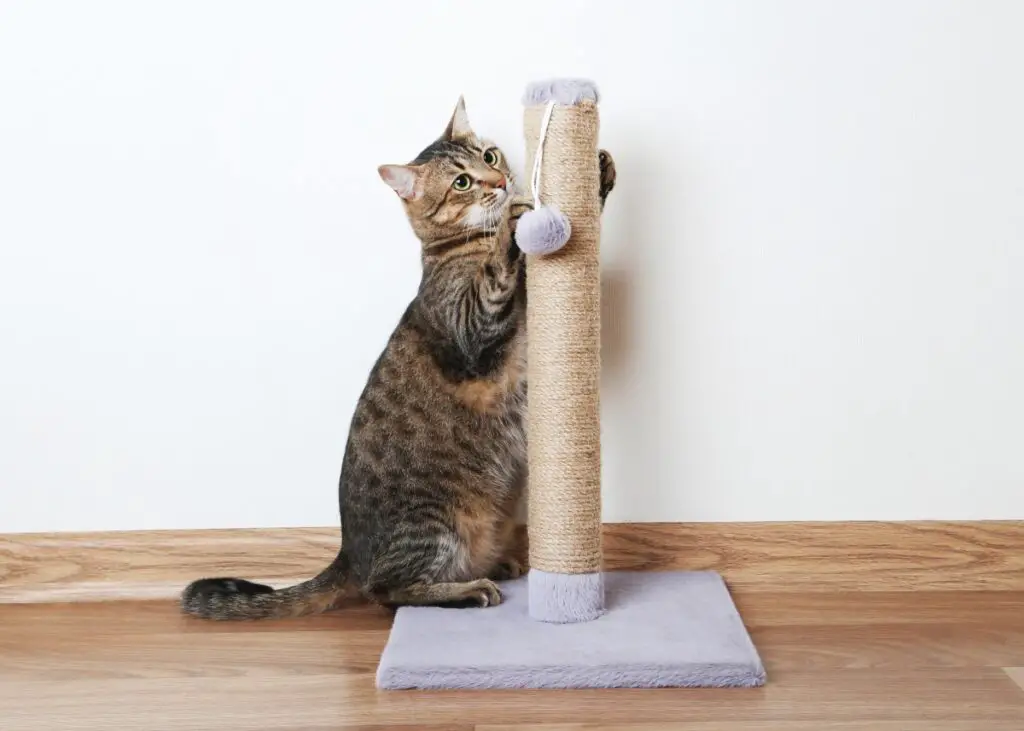
Behavioral Training for Cats
Lastly, another alternative to declawing your cat is consistent behavioral training. It is thought that cats can’t be trained, and in some cases that’s true, but they can and will respond to consistent behavior modification.
When you catch your cat scratching somewhere they shouldn’t be, you can modify their behavior by using some of the following techniques:
Toys
One of the easiest ways to modify a cat’s behavior is to make sure they aren’t bored. Get a variety of toys for them to play with such as wands, kickers, plush toys to chase, ball tracks, and laser pointers. You could even make your own DIY cat toys.
Clicker training
To clicker train your cat, you will make a click with a clicker when your cat demonstrates an undesirable behavior, then reward them when they have demonstrated the desired response.
When your cat is scratching, click the clicker, remove them from the area they are scratching, then give them a cat treat immediately after the click for positive reinforcement.
Sound training
When your cat is caught scratching, make a loud noise instead of yelling. Some things you could try are shaking a container of coins, ringing a bell, or blowing a whistle. This way they get startled but don’t associate startling noises from you.
What is cat declawing surgery like?
If these alternatives to declawing your cat sound overwhelming and you still think that declawing is just “not that big of a deal”, declawing a cat isn’t “just” removing your cat’s claws.
Declawing is a painful surgery that permanently removes portions of bone and nerve endings in the cat’s toes. When you declaw your cat, the front claws are removed along with a portion of bone and nerve ending at the tips of the cat’s toes.
It is the equivalent of amputating a human fingertip at the first knuckle. Yikes!
Why you shouldn’t declaw your cats
As if the pain of the surgery itself and missing their “fingertips” wasn’t enough, there are more reasons not to declaw your cat. Cats need their claws for so many reasons.
Instinct
This includes scratching at ground level as part of their natural hunting behavior, removing dead cells from paws for grooming, marking territory, and climbing trees for exercise and safety.
Territory
If a cat cannot scratch when its claw is worn down, it may resort to biting furniture because they need something else with which to mark its territory. Not only can this damage your furniture, but it can also ruin their teeth.
Mobility
Declawing also has other consequences. Cats will feel more vulnerable on an already unstable surface like carpet or tile. Declawed cats have been shown to experience more mobility issues than cats who still have claws.
Pain
When a cat is declawed they are no longer able to use their paws naturally which can lead to the development of undesirable conditions and behaviors.
This could include arthritis which can potentially result in destructive pain-related behaviors such as biting, aggression, and refusal to use a litter box.
Well-being
Some studies even show that declawed cats suffer from long-term emotional distress after surgery.
Final Thoughts
We hope that this information has been helpful and has given you plenty of helpful alternatives to declawing and reasons to reconsider.



